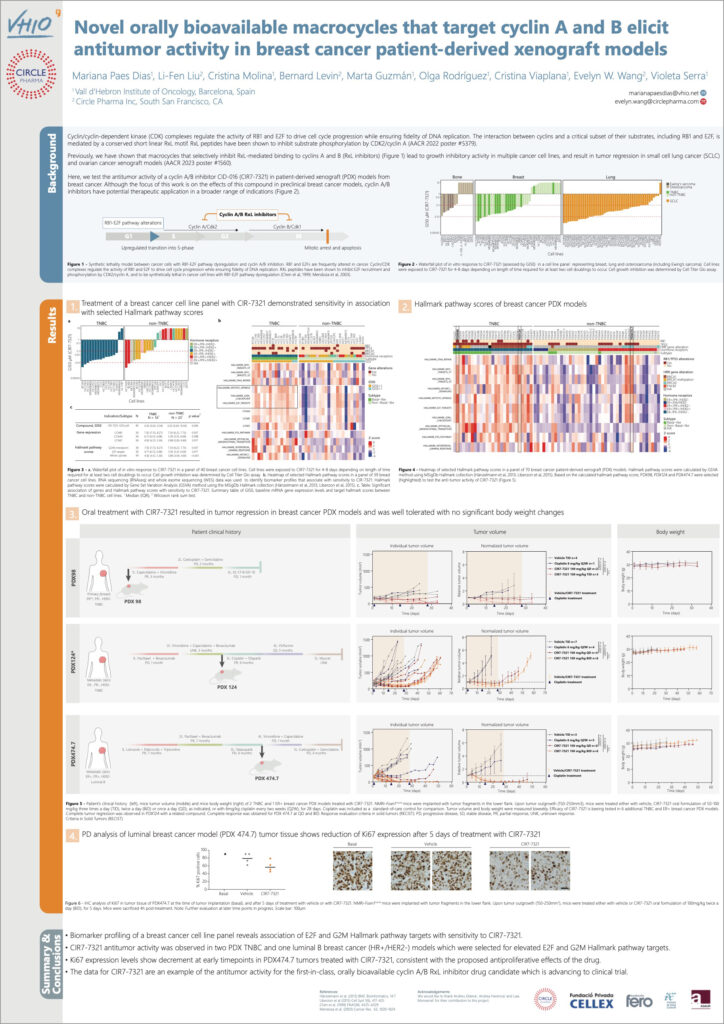
Read original article at Business Wire
Circle Pharma, in collaboration with the laboratory of Violeta Serra, Ph.D., at Vall d’Hebron Institute of Oncology (VHIO) in Barcelona, Spain, recently unveiled preclinical data demonstrating the efficacy of Circle’s oral Cyclin A/B inhibitor macrocycles in patient-derived breast cancer tumor models. This significant development was presented at the 2023 AACR-NCI-EORTC International Conference on Molecular Targets and Cancer Therapeutics
The study in 40 breast cancer cell lines identified an association between hallmark pathway scores in E2F, G2/M, and mitotic spindle pathways and sensitivity to Cyclin A/B inhibition. Most notably, multiple triple-negative breast cancer (TNBC) cell lines and luminal B breast cancer cell lines displayed sensitivity to Cyclin A/B inhibition. These findings were instrumental in selecting TNBC and luminal breast cancer patient-derived tumor models for subsequent in vivo efficacy studies. In these in vivo studies, oral administration of Circle’s Cyclin A/B inhibitor led to substantial tumor regression in both TNBC and luminal breast cancer models, with complete response observed in a luminal B breast cancer model derived from a patient whose tumor had previously progressed following multiple treatments, including with a CDK4/6 inhibitor.
Breast cancer is the second leading cause of cancer-related deaths in women globally. Triple negative breast cancer, which accounts for 10-20% of all breast cancer cases, is an aggressive and challenging subtype of breast cancer, associated with poor prognosis and high risk of relapse1. Because TNBC lacks specific receptors (estrogen, progesterone, or HER2) that some other breast cancers have, many newer therapies used to target these receptors in other forms of breast cancer are not effective. Luminal breast cancers are hormone receptor-positive and generally less aggressive than TNBC. Luminal breast cancers can be further divided into two subtypes: luminal A (HR+/ER+/HER2+) and luminal B (HR+/PR+/HER2-). These two subtypes make up about 70% of all breast cancer cases2.
1 American Society of Clinical Oncology. (2017 May) Triple-Negative Breast Cancer: Current Practice and Future Directions. Ricardo L.B. Costa and William J. Gradishar.
2 Nature. (2000; 406) Molecular portraits of human breast tumours. Perou CM, Sorlie T, Eisen MB, et al.
